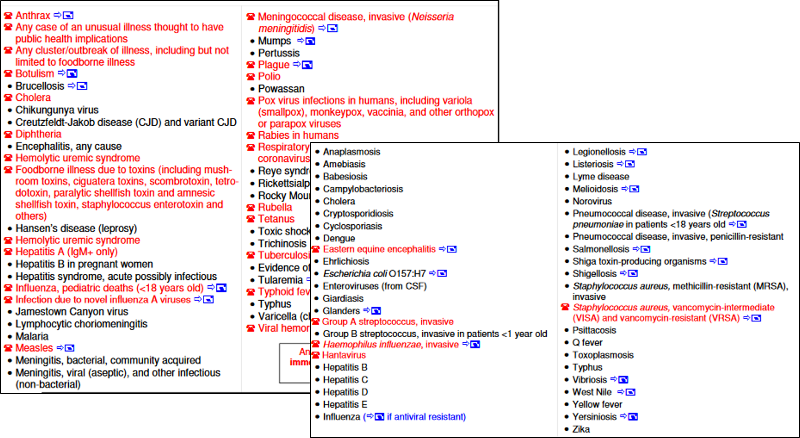Part 1 - Descriptive Epidemiology
Public Health Surveillance
Keeping track of the frequency of health problems in a population is essential to the planning, implementation, and evaluation of public health practice, and this information needs to be readily available to those responsible for prevention and control of disease. How is the raw data for this endeavor obtained and evaluated?
Data Sources for Public Health Surveillance and Monitoring the US Population
Today there are many sources of data that are useful for monitoring the health of populations and for exploring how disease frequency changes over time and how it relates to personal characteristics and location (person, place and time). Below is a partial list of examples of possible data sources.
- US Census and US National Vital Statistics System; state registries, e.g., the Massachusetts Registry of Vital Statistics and Records and the Massachusetts Vital Statistics Directory.
- Disease Registries: (e.g., Massachusetts Cancer Registry, the ALS Registry (amyotrophic lateral sclerosis, or Lou Gehrig's Disease), and registries for Parkinson's disease and multiple sclerosis are being formed.)
- Hospital Discharge Registries (e.g., the Massachusetts Health Data Consortium)
- In the state of Massachusetts the Community Health Information Profile (MassCHIP) provides a dynamic, user-friendly information service for obtaining free, online access to many health and social indicators. With MassCHIP, you can obtain community-level data to assess health needs, monitor health status indicators, and evaluate health programs.
- Commercial data (sales of tobacco, drugs, etc.)
- Infectious disease surveillance: Each state in the US requires that specific infectious diseases are reported and maintains a system for recording and disseminating these data. In Massachusetts these data are collected and maintained by the Office of Integrated Surveillance and Informatics Services (ISIS). State data is also forward to the federal government (the Division of Emerging Infections and Surveillance Services (DEISS). The image below shows a list of the many "notifiable" infectious diseases in Massachusetts.

There are many cross-sectional surveys and databases that are periodically conducted, many of which can be accessed from the National Center for Health Statistics.


